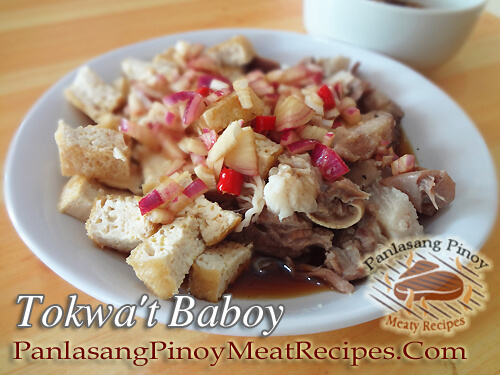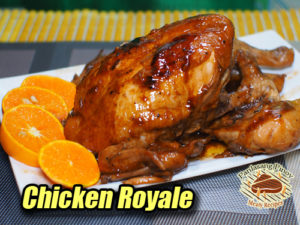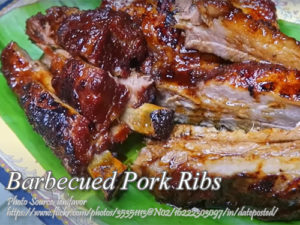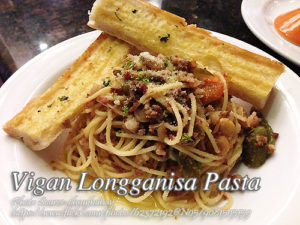Tokwa’t baboy is I think one of the Pinoy’s comfort food. I was craving one day for tokwa’t baboy but I don’t like the taste of those sold in turo-turo (street food vendors) or fast foods. Because the pork taste bland and the vinegar is too sour. I was thinking what if I use apple cider vinegar? Yes my experiment is a success. With sauce made by my wife combining the ingredients creates a fruity, spicy-sweet and sour taste.
Then I boiled the pork using a charcoal stove because cooking in charcoal give a more flavorful taste compared to cooking in electric stove or LPG stove. And no need for a pressure cooker because it tenderizes the pork with a firm texture. Also, you can use pork belly if you can’t find pork cheeks and ears. If you can find ears or cheeks, select the cheek part with pork tongue because I’m sure it will taste better.
Boiled Pork Fried Tofu, This is Comfort Food with a Twist
But there’s just something about this dish that always brings warm memories. It may be so because it has been served at family gatherings or eaten in our late-night meals, but this dish is one of the favorite Filipino dishes that we love to savor. I always appreciated how boiled pork and crispy tofu blend up to make the perfect bite – soft and crunchy, all savory and tangy. And like any other well-loved dish, being easy to pick upon how it is made could easily do it bad.
I still remember one day where I really craved this childhood favorite, but all turo-turos had never been up to my mark. The pork was so bland, and the sauce was too vinegarish for me. It was then that I resolved to cook it at home by making some adjustments to the original recipe, and boy, did it turn out a hit.
The Secret to Tender, Flavorable Pork: Charcoal Cooking
One thing I learned in the cooking sessions with the family is that how you prepare your pork can really make much of a difference. My uncle, who used to prepare this dish for our family reunions, would always insist that when boiling the pork, he had it cooked over a charcoal stove instead of letting it be cooked over an LPG or electric burner. I didn’t realize why this might matter so much until I tried it out for myself: the subtle smoky taste charcoal imparts, which one cannot possibly get from any other form of cooking.
But what one gets as well is the gradual and constant heat from charcoal, which works on taming the pork without making it too soft. The meat must, of course, be tender but firm enough to hold its shape with the fried tofu. If you can get access to a charcoal stove, then do try using it, believe me, it’s worth the little extra effort involved. If this is not possible, a regular stove will, of course, serve the purpose well. I assure you that once you try it on charcoal, there’s no going back.
Tangy Twist: Apple Cider Vinegar
Another change that came was with the sauce. Well, on our side, we have always used cane vinegar, which has the strong sour taste. But in my own cooking, I was asking myself whether apple cider vinegar would be a different story altogether. I did not make a mistake by trying.
It also has a fruity flavor that should complement the acidity of the sauce. Not sour at all, as when it’s blended with sugar, soy sauce, and siling labuyo (bird’s eye chili). My wife perfected the sauce, just the tanginess required without overpowering the other flavors. It is now the only way we make it at home, and even my uncle—the resident expert—agrees.
Pork Cheeks and Ears or Belly? Your Choice!
Traditionally, pork ears and cheeks were used in this dish, providing a wonderful mix of tender meat and gelatinous texture. If you can find pork cheeks at your local market, I encourage you to use them. Cheeks, especially when using a combination of pork tongue, soak the sauce up beautifully, making the bite rich and satisfying.
However, one cannot always wait for pork cheeks and ears to go on sale in town markets. A good alternative, in this case, is pork belly. It is easier to get, and the fat-to-meat ratio is balanced. Just be sure to cook it long enough so that the meat is tender but still firm. Whatever you choose-pork cheeks, ears, or even belly-both the dish and crispy tofu will turn out spectacularly mouth-watering.
It is Very Versatile for Any Occasion
This is the best. It can either be a pulutan served as a pulutan or an appetizer, a main course dish, or even as an accompaniment to lugaw. My sister in the province always adds this to her lugaw for extra flavor. My brother will have this pulutan in our family gatherings. However way you want to serve this, the dish will never fail to satisfy.
It is not one and the same with each bite-the mix of textures from the crunchy tofu to the tender pork. The sauce needs to be right-balancing salty, sweet, and sour-but do not forget the siling labuyo pepper heat. Make it less spicy, if you like, but in my family, we do like to feel a little kick.
Dish with Roots in Filipino History
This can be very simple, but it is also very rich in history. Tokwa or tofu was brought to the Philippines by Chinese migrants and eventually became a staple in most kitchen counters of the nation. As pork is among the favorites of Filipinos as protein, it could only go well into this Filipino dish with such simple mixture. In time, it would grow to become one of the most prized comfort foods of the country.
The beauty of this dish is in its simplicity. Made from simple ingredients, transformed into something special should it be cooked properly. In the way crispy-tender contrast offers a good reason why Filipinos take simple food and elevate it into something comforting and delicious at the same time.
Putting It All Together
Whether you are the beginner cook or a seasoned home chef, this is one of those dishes that you can easily master. It is one of those good recipes to try on a weekend when you have a little extra time, and the rewards are well worth the effort. With its rich, savory flavors and comforting textures, it is the sort of dish that calls people to gather around the table.
Try this recipe the next time you feel like feasting on something rich and full of flavor. Feel free to experiment with the sauce or variety cuts of pork so that you end up with your perfect favorite.
How to Cook Tokwa't Baboy (Boiled Pork with Fried Tofu)
Ingredients
For the tokwa't baboy
- 12 pcs tokwa or tofu about 2 inch square inch
- 1 kilo pork ears and cheeks (pork maskara) or pork belly
- 1 Tbsp. black peppercorn cracked
- 1 Tbsp. rock salt
For the sauce:
- 1 cup water
- 1/4 to 1/2 cup apple cider vinegar or cane vinegar
- 1 piece medium size red onion chopped
- 2 Tbsp brown sugar
- 3 pieces siling labuyo bird's eye chili, chopped
- 1 to 2 Tbsp. soy sauce
Instructions
How to Cook Tokwa't Baboy
- Wash and clean the pork ears and cheeks by removing hairs and remaining blood.
- Rub with rock salt to remove the odor. Wash in running water and drain.
- In a pot, put enough water just to cover the pork and add salt and black pepper.
- Boil for an hour or until the pork is tender.
- Use a charcoal stove if you have one because it taste better and the pork is easier to tenderize and the pork is still firm.
- In the meantime deep fry the tokwa until golden brown. Drain and let cool.
- Slice the tokwa into cubes and put in a deep platter but leave enough space for the pork.
- Slice the pork cheeks and ears into squares and mix them with the tofu.
- It's up to you if you want to arrange the tofu and pork side by side if you don't want to mix them.
- For the sauce, combine water, vinegar, sugar, onion, soy sauce and siling labuyo. Mix well until the sugar is dissolved.
- Pour the sauce over the tokwa and pork then serve.
Video
Notes
Cooking Tips:
Use Charcoal for More Flavorful Dishes
Boiling the pork over charcoal aids in imparting a subtle smokiness to the flavor of the meat, which one cannot do by cooking on a gas or electric stove. The slow and even heat tends to soften the pork without making it lose its firm texture. If you can use charcoal, then using it is going to take your dish to an entirely different level.Choose the Right Cuts of Pork
Those classic pork cheek and ear cuts give a nice mix of tender meat and gelatinous texture. Pork belly is a good alternative, in case those cuts are not available, as it balances fat and lean meat. Whichever cut you use, cook until tender but still firm to the bite.Don't Skip the Sauce
The sauce is what holds everything together. Don't be afraid to take the time to get the balance of flavors right. In this case, it is fruity sweetness balancing out tanginess from apple cider vinegar, complementing depth and heat with soy sauce and siling labuyo. Taste and adjust to your liking for the right combination of sweetness and heat.






Hi just want to know can I use pork belly instead of pork mask which is hard to find?
Hi Rosalina, yes you can use pork belly.